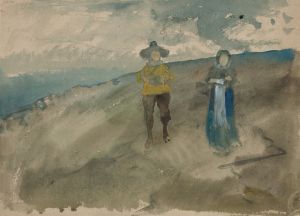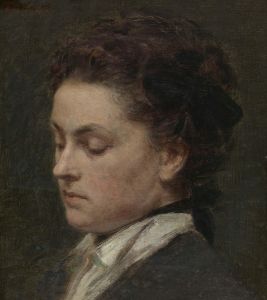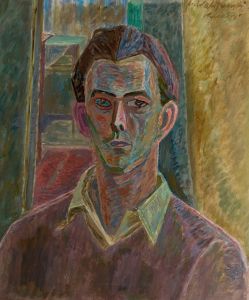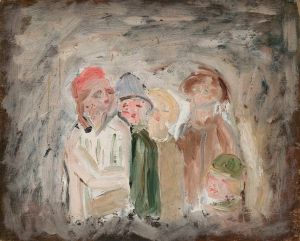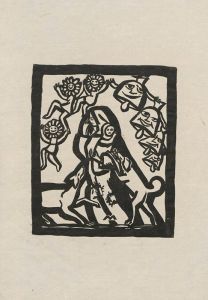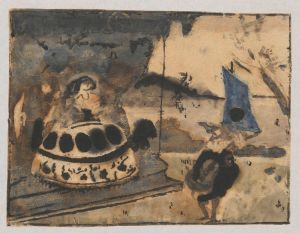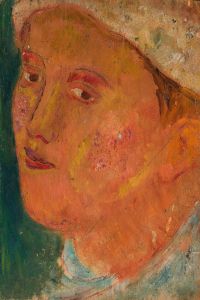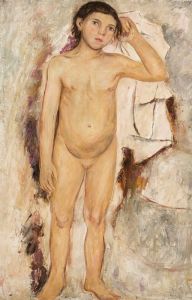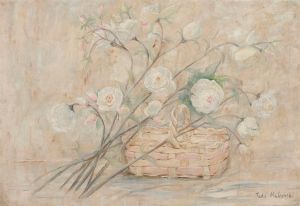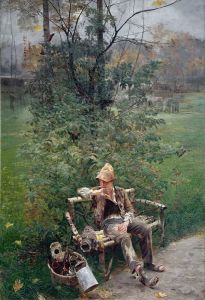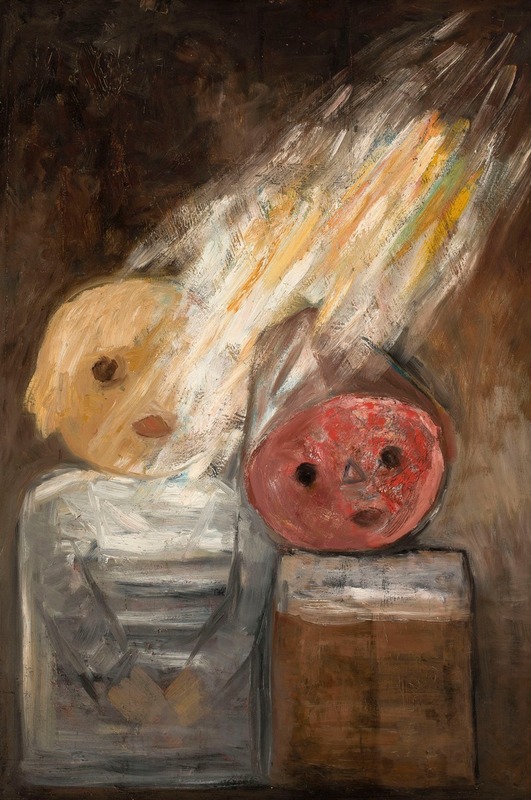
Self-portrait with a palette
A hand-painted replica of Tadeusz Makowski’s masterpiece Self-portrait with a palette, meticulously crafted by professional artists to capture the true essence of the original. Each piece is created with museum-quality canvas and rare mineral pigments, carefully painted by experienced artists with delicate brushstrokes and rich, layered colors to perfectly recreate the texture of the original artwork. Unlike machine-printed reproductions, this hand-painted version brings the painting to life, infused with the artist’s emotions and skill in every stroke. Whether for personal collection or home decoration, it instantly elevates the artistic atmosphere of any space.
Tadeusz Makowski was a Polish painter known for his unique style that combined elements of Post-Impressionism and Cubism, often featuring themes of childhood and rural life. One of his notable works is "Self-portrait with a Palette," which reflects his artistic journey and personal expression.
Makowski was born on January 29, 1882, in Oświęcim, Poland. He initially studied classical philology at the Jagiellonian University in Kraków before pursuing his passion for art at the Academy of Fine Arts in Kraków. There, he studied under the guidance of Józef Mehoffer and Jan Stanisławski, who were influential figures in Polish art. In 1908, Makowski moved to Paris, which was then the epicenter of the art world, and it was here that he developed his distinctive style.
"Self-portrait with a Palette" is a testament to Makowski's deep engagement with the artistic movements of his time. While the exact date of the painting is not definitively known, it is believed to have been created during his mature period, when he had fully developed his unique artistic voice. The painting is characterized by its use of geometric forms and a muted color palette, which are hallmarks of Makowski's style. The self-portrait not only serves as a reflection of his physical appearance but also offers insight into his identity as an artist.
Makowski's work often depicted scenes of children, rural landscapes, and everyday life, infused with a sense of nostalgia and simplicity. His style was influenced by his exposure to various art movements in Paris, including Cubism, which is evident in the structured composition of "Self-portrait with a Palette." The painting's geometric forms and subtle use of color demonstrate Makowski's ability to blend different artistic influences into a cohesive and personal expression.
Throughout his career, Makowski remained somewhat isolated from mainstream art movements, choosing instead to focus on his personal vision. His work was not widely recognized during his lifetime, but he gained posthumous recognition for his contributions to modern art. Today, Makowski is celebrated as one of Poland's significant artists of the early 20th century, and his works are held in various collections, including the National Museum in Warsaw and the Musée National d'Art Moderne in Paris.
"Self-portrait with a Palette" is an important piece within Makowski's oeuvre as it encapsulates his artistic philosophy and dedication to his craft. The painting serves as a window into the artist's world, offering viewers a glimpse of the man behind the canvas and the palette. Makowski's ability to convey emotion and depth through simple forms and colors is a testament to his skill and artistic vision.
In summary, Tadeusz Makowski's "Self-portrait with a Palette" is a significant work that reflects the artist's unique style and personal journey. Through its geometric composition and muted tones, the painting captures the essence of Makowski's artistic identity and his contributions to the world of modern art.





